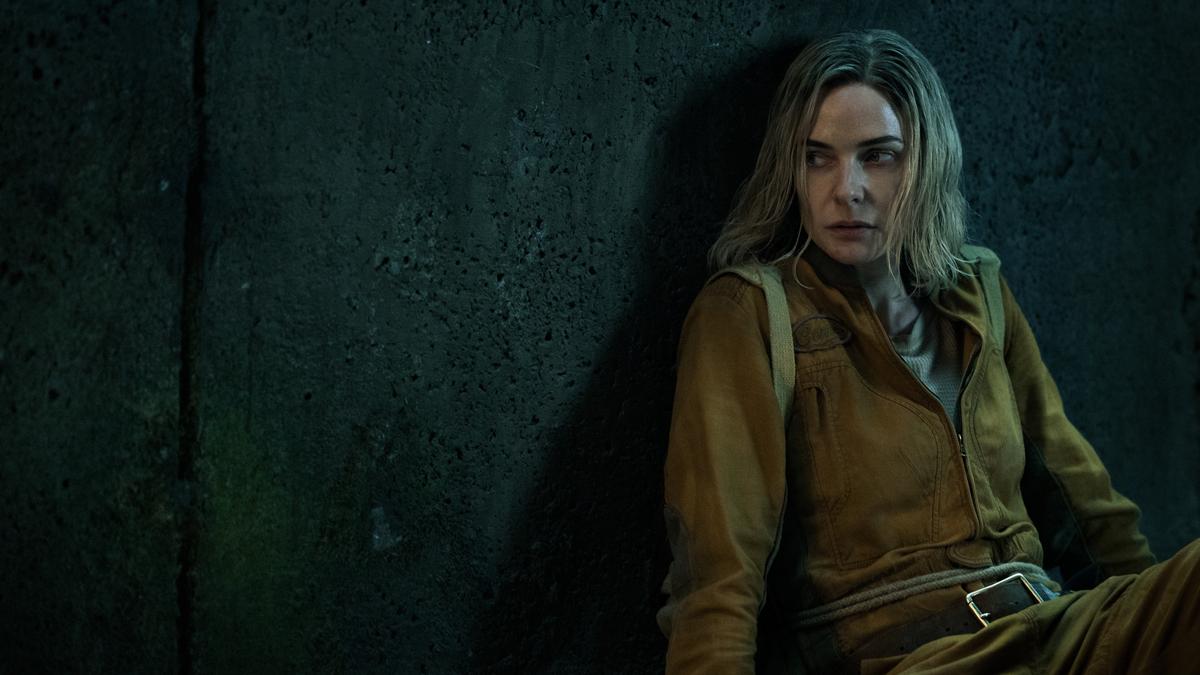- October 24, 2025
‘A House of Dynamite’ movie review: Kathryn Bigelow’s DEFCON-1 stages a bureaucratic parade of panic

A still from ‘A House of Dynamite’
| Photo Credit: Netflix
Kathryn Bigelow returns with a film that seeks to convert abstract geopolitical dread into a clinical exercise in decision-making under catastrophic time pressure. The conceit in A House of Dynamite is spare and severe: a rogue intercontinental ballistic missile is detected en route to the American Midwest, and the 18 minutes to impact crystallise into a moral and procedural crucible. The Academy-winning director, best known for The Hurt Locker and Zero Dark Thirty, stages that crucible with a formal rigour that is sometimes electrifying and at other moments architecturally brittle.
The film’s gambit is to replay the same window of time from successive institutional heights, including the missile-interception crews in Alaska, the White House Situation Room, the presidential motorcade and more — so that contingency becomes a refracted motif. This repetition is purposeful because each iteration reveals a different crust of institutional logic. Yet the repetition also weakens its impact. After the first pass, the film’s revelations offer gradually diminishing returns.

A House of Dynamite (English)
Director: Kathryn Bigelow
Cast: Idris Elba, Rebecca Ferguson, Gabriel Basso, Jared Harris, Tracy Letts, Anthony Ramos, Moses Ingram, Jonah Hauer-King
Runtime: 112 minutes
Storyline: American radars detect a nuclear missile. The president and his entourage must use the limited time they have to try to shoot down the missile before it reaches Chicago
Technical mastery is apparent at every turn, and the film looks and sounds like the Nuclear Football (the POTUS’s emergency satchel for nuke codes) turned into a thriller. Bigelow’s direction is precise to the point of austerity. Barry Ackroyd’s camera favours close, handheld attention, compounding the sensation that authority is a set of trembling hands on cold consoles. Kirk Baxter’s editing supplies a staccato rhythm that maps cleanly onto the phone calls and protocol rollouts. Sound and score operate as a single, insistent organism, and Volker Bertelmann’s music and the design’s mechanical low end insist on bodily unease rather than rhetorical alarmism.

A still from ‘A House of Dynamite’
| Photo Credit:
Netflix
Where the film is most provocative is in its humanism. The screenplay, credited to Noah Oppenheim, resists reducing its ensemble to caricatured hawks and doves. Idris Elba’s president possesses a fragile sense of authority. He is decisive only insofar as he is haunted by the banality of responsibility. The evergreen Rebecca Ferguson embodies professional composure that fractures in private glimpses of domestic worry. Jared Harris’s Secretary of Defense carries the personal stakes of his estranged child in the strike zone that makes the abstract unbearably particular. These performances try to insist that the architects of deterrence are not soulless automatons but fatigued custodians of a system that may have outlived its coherence (although it’s difficult to fully mourn soldiers who enforce the planet’s most enthusiastically destructive superpower).

The film’s indictment of deterrence and missile-defence doctrine purposefully slides into rhetorical bluntness. Military jargon and barrages of acronyms accumulate without translating into anything of value. The movie wants to expose the bureaucratic illusion of the promise that technology and protocol will reliably avert apocalypse, but it occasionally undermines its own thesis by mixing statistics with forced metaphors that do not quite cohere.
Bigelow’s restraint with onscreen violence is a strategic decision that pays off in tonal force. The absence of graphic destruction renders the threat more metaphysical. The nuke itself is not a spectacle to be consumed, à la Christopher Nolan’s (controversial) decision to mute the horrors at Hiroshima. But that same restraint here reinforces the film’s central proposition that modern catastrophe is administered as procedure, and it allows the final, ambiguous end to land with a weight that any CGI mushroom cloud over Chicago would have dissipated.

A still from ‘A House of Dynamite’
| Photo Credit:
Netflix
Bigelow’s aim is not to construct an unassailable primer on modern arsenals, but to stage a thought experiment about accountability in an era of proliferating doomsday levers. On that level, the film is unnervingly successful.
However, Bigelow’s particular style of filmmaking also remains tangled in a paradox of critique and complicity. She frames the military-industrial apparatus with a diligence that suggests scepticism, yet her lens often lingers with a voyeur’s admiration on the kinetics of American power. The choreography of hardware, the meticulous procedures of the occupation and the seductive mechanics of surveillance — all receive a cinematic reverence that edges toward propaganda by spectacle. The film may try to position itself as a diagnostic of violence emerging from imperial ambition, but its heavily stylised ambition risks anaesthetising audiences to its consequences.

A House of Dynamite is obviously not entertainment that comforts. It’s an object lesson in how thin the membrane is between strategic ritual and apocalypse. It may be meticulously made and philosophically provocative, but it feels far too dazzled by its own proximity to the trigger and sparks debate exactly the way Pentagon PR would dream.
A House of Dynamite is currently streaming on Netflix
Published – October 24, 2025 06:52 pm IST







